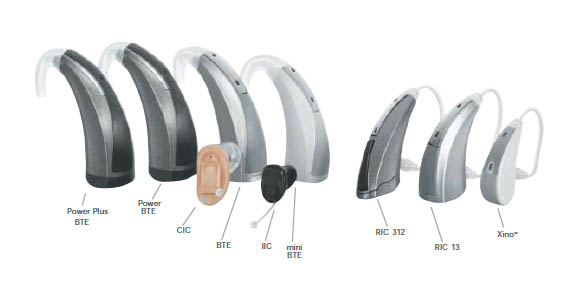Type of hearing aids
The moment a person is diagnosed with hearing loss, he becomes apprehensive, tense and even emotional. If a hearing aid is recommended, many a time the affected person goes through an emotional upheaval and gets into a denial mode. This is not the case when a person is diagnosed with sight impairment and is recommended with a pair of spectacles. The reason for rejection of hearing aids has been the stigma attached to wearing hearing aids. People do not mind wearing spectacles as they feel it’s cool and at times even makes a fashion statement. Hearing aids are yet to reach this level of acceptance.
It is important to know that there are a number of options out there today for hearing solutions. Not everybody needs the same strength or style of hearing aid. Hearing technology has come a long way. It is extremely difficult for someone to get past the image in their mind about what a hearing aid may look like and the social stigma attached to it. Hearing aid technology has evolved to the extent that there are TOTALLY INVISIBLE hearing aids that would help get over the stigma of wearing hearing aids.
Invisible in canal hearing aids are the best option for those whose social stigma of wearing hearing aids affects them psychologically. Your loved ones lifestyle does not change in anyway and they participate in everyday life just as how they do always with the confidence that the hearing aids that he is wearing are invisible to others.
When it is clear that one needs a hearing aid, a qualified clinical audiologist is the person who could assess your loved ones about his or her everyday life, work environment, social habits etc., based on which an appropriate hearing aid would be recommended. This is very crucial because the kind of hearing aid that one requires may not be what someone else requires. For instance if your loved one enjoys watching TV, plays sports, involves in discussions, then these are important factors to be taken into account for recommending the right kind of hearing aid.
Hearing aids may broadly classified as follows:
Invisible in the canal hearing aid (IIC)
The invisible in canal hearing aid is the latest addition to the types of hearing aid. This hearing is 100% invisible and the hearing aid is so small that it rests deep in the ear canal invisible even to someone sitting close to the wearer and looking into the ear. However the Invisible in canal hearing aid may not fit every patient as the width and depth of the ear canal is important. In case the ear canal is thin, IIC’s cannot be fitted. These hearing aids fit hearing losses from moderate to severe and in some cases profound too.
Completely in the canal hearing aid (CIC)
Hearing aids that do fit entirely within the ear canal are known as completely-in-the-canal (CIC) hearing aids. These hearing aids use components small enough that none of the hearing aid need to protrude into the concha or outside of the ear canal. These hearing aids are slightly visible from the sides. These hearing aids fit hearing losses from moderate to severe and in some cases profound too.
In the canal hearing aid (ITC)
Hearing aids that fit in the ear canal with a portion of the same visible out of the ear canal are called in-the-canal (ITC) hearing aid. These hearing aids are quite visible from the sides. These hearing aids fit hearing losses from moderate to severe and in some cases profound too.
Receiver in the canal hearing aid (RIC)
A more recent variation of the behind the ear hearing aid is the receiver-in-the canal (RIC), in which the receiver is located within the ear canal rather than in the BTE case, and an electrical cable rather than an acoustic tube runs from the electronics to the ear canal. These hearing aids are much smaller in size than the traditional BTE hearing aids. These hearing aid are far less visible than the BTE’s and are quite small that they fit snugly behind the ear. The electrical cable is also so thin that they merge with the colour of the skin. These hearing aids are the best option for those diagnosed with mild to moderate hearing loss. These hearing aids fit hearing losses ranging from mild to severe.
Behind the ear hearing aid (BTE)
A behind-the-ear (BTE) hearing aid consists of two parts. The microphone and electronics are mounted in the characteristic banana-shaped case, or in some artistic variations of it. In the long established form of the BTE, the receiver is also mounted in the case. The sound from it is conveyed acoustically via a tube to a custom ear mould that retains the open end of the tube within the ear canal. These hearing aids are the largest in the hearing aid family and are quite visible to others. These hearing aids are the best option for those diagnosed with profound hearing loss. These hearing aids fit hearing losses moderately severe to profound. Do not take hearing loss lightly. It is more than a hearing loss.




